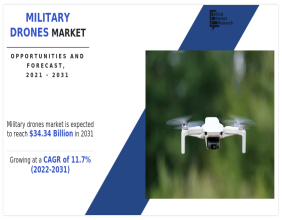Highlights
- Describes an economy with balanced growth and stable inflation.
- Originated in the mid-1990s to depict optimal economic performance.
- Implies conditions that are sustainable without overheating or recession.
The term “Goldilocks Economy” was coined in the mid-1990s to describe a period of economic growth that was considered “just right” – not too hot to cause inflation, and not too cold to trigger a recession. The name draws inspiration from the fairy tale of Goldilocks and the Three Bears, where Goldilocks finds the porridge that is neither too hot nor too cold, but just right. This analogy effectively captures the ideal state of an economy that grows at a moderate pace, maintaining a balance between economic expansion and inflation control.
Origins and Context
The concept of a Goldilocks Economy emerged during the 1990s when the United States experienced a period of robust economic growth paired with low inflation and stable interest rates. This unusual combination challenged traditional economic theories that linked strong growth with rising inflation. Economists and financial analysts began using the term to describe this favorable economic environment, which seemed to defy the usual boom-and-bust cycles.
During this period, technological advancements, increased productivity, and globalization contributed to sustained economic growth. Meanwhile, central banks maintained moderate interest rates, preventing the economy from overheating while supporting steady consumer demand and investment. This balance of factors led to a scenario where growth was sufficient to reduce unemployment but not excessive enough to trigger inflationary pressures.
Characteristics of a Goldilocks Economy
A Goldilocks Economy is marked by several key characteristics:
- Moderate Growth: The economy expands at a steady rate, allowing businesses to grow and employment levels to rise without creating excessive demand.
- Low Inflation: Prices increase gradually, preventing the erosion of purchasing power and maintaining consumer confidence.
- Stable Interest Rates: Central banks keep interest rates at levels that support borrowing and investment while curbing inflationary risks.
- High Employment: Job creation keeps pace with population growth, maintaining low unemployment rates.
- Sustainable Expansion: Economic growth is stable and long-lasting, avoiding the volatility of rapid booms and sharp busts.
Implications for Policy and Investment
In a Goldilocks Economy, policymakers and investors face unique opportunities and challenges. Central banks aim to maintain the delicate balance by adjusting interest rates to control inflation without stifling growth. Meanwhile, investors benefit from stable financial markets, as moderate growth and low inflation support steady corporate earnings and stock market performance.
However, maintaining a Goldilocks Economy requires vigilant economic management. If growth accelerates too rapidly, inflation may surge, prompting central banks to raise interest rates and potentially slowing the economy. Conversely, if growth falters, unemployment could rise, and the economy may slip into recession.
Historical Examples
The U.S. economy in the mid-to-late 1990s is often cited as a classic example of a Goldilocks Economy. During this period, technological innovations, particularly in the information technology sector, fueled productivity gains and economic expansion. Simultaneously, globalization kept inflation in check by allowing companies to source cheaper goods and labor from abroad.
Another example occurred in the mid-2000s when moderate growth and low inflation supported stable financial markets. However, this period also demonstrated the risks associated with complacency in a Goldilocks Economy, as the housing market bubble eventually triggered the 2008 financial crisis.
Criticisms and Risks
Despite its apparent benefits, the Goldilocks Economy is not without critics. Some economists argue that such periods of stability can lead to excessive risk-taking and asset bubbles, as investors grow complacent and underestimate potential economic shocks. Additionally, a focus on maintaining low inflation and moderate growth may result in wage stagnation and increased income inequality.
There is also the risk that external factors, such as geopolitical events, technological disruptions, or global financial crises, could abruptly end the Goldilocks phase. Therefore, while desirable, a Goldilocks Economy is inherently fragile and requires cautious economic stewardship.
Conclusion
The Goldilocks Economy remains a powerful metaphor for an economic state that is “just right” – characterized by steady growth, low inflation, and high employment. First identified in the mid-1990s, it reflects an ideal balance that supports sustainable expansion without the excesses of boom periods or the pain of recessions. However, maintaining this delicate equilibrium is challenging, requiring vigilant economic policy and a keen awareness of global dynamics.
While periods of a Goldilocks Economy offer stability and growth opportunities, they are often fleeting and susceptible to disruption. As history shows, even seemingly perfect economic conditions can give way to financial crises if risks are underestimated. Therefore, policymakers and investors must remain vigilant, ensuring that the pursuit of stability does not lead to complacency or hidden vulnerabilities.



